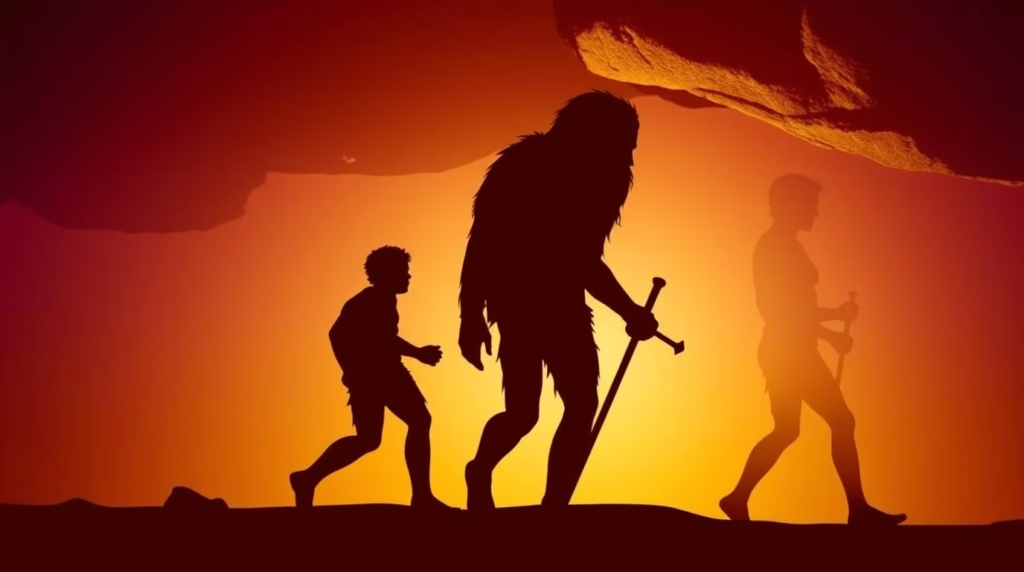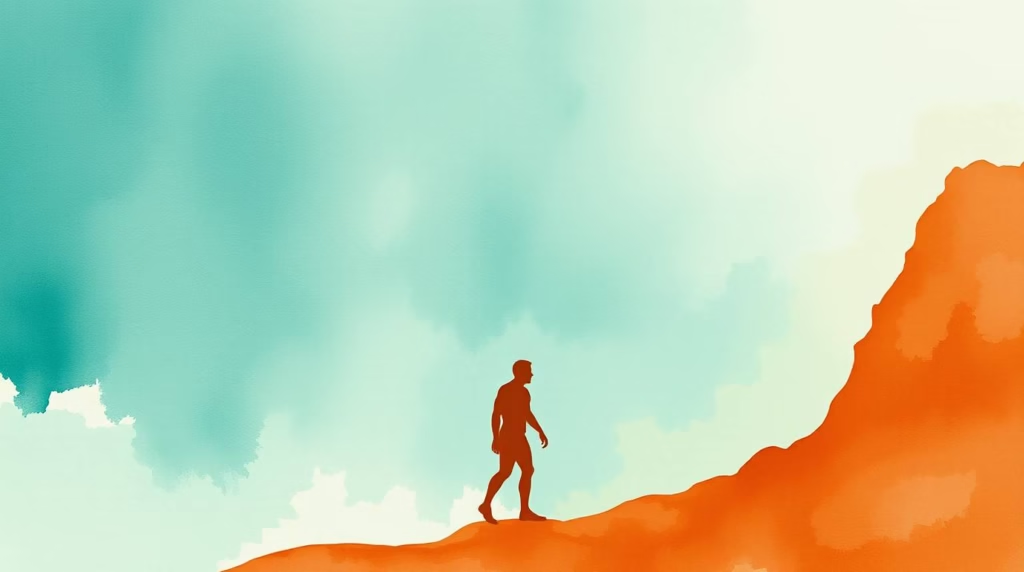Rewriting Human History: A 110,000-Year-Old Discovery Unveils Neanderthal and Homo sapiens Collaboration
The story of human evolution has taken a remarkable turn with a groundbreaking discovery at Tinshemet Cave in central Israel. This 110,000-year-old archaeological site suggests that Neanderthals and Homo sapiens didn’t just coexist—they actively collaborated, sharing technology, customs, and even burial practices in the Levant region. This finding challenges long-held assumptions about early human relationships and positions the Levant as a critical hub in the narrative of human development. Published in *Nature Human Behaviour*, the first scientific report on Tinshemet Cave offers compelling evidence of cultural exchange that shaped the foundations of early human society.
A New Perspective on Neanderthal and Homo sapiens Interactions
For decades, scientists debated the nature of Neanderthal and Homo sapiens relationships. Were they fierce competitors vying for scarce resources, or did they engage in peaceful exchanges? The discoveries at Tinshemet Cave, located in the heart of Israel, provide a fresh perspective. Dating back to the mid-Middle Paleolithic period (approximately 250,000 to 50,000 years ago), this site reveals that these two human species lived side by side and interacted in meaningful ways. Far from being isolated, they shared tools, hunting techniques, and daily practices—evidence of a deep and complex relationship.
The research, led by Prof. The collaboration between Dr. Marion Prévost of the Hebrew University, Prof. Israel Hershkovitz of Tel Aviv University, and Yossi Zaidner of the Hebrew University of Jerusalem began in 2017. Their findings indicate that this collaboration wasn’t a fleeting occurrence but a sustained exchange that influenced both groups. This interaction fostered social complexity, sparked behavioral innovations, and laid the groundwork for some of humanity’s earliest cultural milestones.
Tinshemet Cave: A Window into the Past
Tinshemet Cave stands out as a treasure trove of archaeological and anthropological evidence. Among its most significant discoveries are the first mid-Middle Paleolithic burials found in over 50 years. These burials, dating back 110,000 years, mark a pivotal moment in human history—the emergence of formal burial customs. The presence of such practices suggests that early humans in the Levant were developing a sense of ritual and possibly even beliefs about the afterlife.
The site also yielded evidence of symbolic behavior, including the widespread use of ochre, a mineral pigment likely used for body decoration or artistic expression. This practice hints at the development of social identities and group distinctions, further underscoring the sophistication of these early human communities. Alongside ochre, archaeologists uncovered stone tools, animal bones, and other artifacts carefully placed in burial pits, offering clues about the spiritual and cultural lives of Neanderthals and Homo sapiens.
The Levant: A Crossroads of Human Evolution
The Levant, encompassing modern-day Israel, Lebanon, Jordan, and parts of Syria, has long been recognized as a key region in human evolution. Its strategic location at the crossroads of Africa, Asia, and Europe made it a melting pot for different human groups. During the mid-Middle Paleolithic, climatic improvements boosted the region’s resources, increasing its carrying capacity. This environmental shift led to population growth and intensified contact between Neanderthals, pre-Neanderthals, and Homo sapiens.
Israel is a “melting pot” where many human populations came together, mixed, and developed together, according to Prof. Zaidner. “Our research shows that human connections and population interactions have been the driving force behind cultural and technological advancements throughout history,” he says. This exchange of knowledge and practices gradually homogenized the cultures of these groups, creating a shared foundation that influenced their development.
Dr. Prévost emphasizes the region’s unique geographic role. “The Levant served as a bridge for human dispersals, and during the mid-Middle Paleolithic, it became a hotspot for demographic expansion and cultural innovation,” she explains. This dynamic environment fostered not only survival strategies but also the social bonds that defined early human societies.
Shared Practices and Cultural Innovations
The evidence from Tinshemet Cave points to a remarkable level of collaboration between Neanderthals and Homo sapiens. One of the most striking examples is their shared approach to stone tool production. Both groups used similar techniques to craft tools, suggesting a transfer of technological knowledge. Hunting strategies also overlapped, indicating that they may have worked together to exploit the region’s resources more effectively.
Beyond practical skills, the two species appear to have influenced each other’s symbolic and social behaviors. The use of ochre, for instance, wasn’t just a decorative choice—it likely carried cultural significance, marking individuals or groups within a broader social framework. The emergence of formal burials around 110,000 years ago further highlights this cultural exchange. These burials, among the earliest known worldwide, suggest that intensified social interactions led to new ways of honoring the dead.
Prof. Hershkovitz notes that the interconnected lifestyles of these human groups reveal a blend of cooperation and competition. “The results provide a clear picture of dynamic interactions that influenced their environmental adaptation,” he explains. This interplay likely spurred innovations that set the stage for later developments in human history.

Burial Practices: A Clue to Early Beliefs
The clustering of burials at Tinshemet Cave raises fascinating questions about its role in Middle Paleolithic society. Was it a designated burial ground or even an early form of cemetery? If so, this would indicate a level of communal organization and shared rituals previously unseen in the archaeological record. The inclusion of artifacts like stone tools, animal remains, and ochre chunks in the burial pits suggests that these items held special meaning—perhaps as offerings or symbols of an afterlife.
These burial practices offer a glimpse into the spiritual lives of Neanderthals and Homo sapiens. The care taken in these rituals points to strong social bonds and a growing sense of identity among these early humans. It’s possible that the act of burying the dead together strengthened group cohesion, fostering a sense of unity that transcended species boundaries.
Implications for Human Evolution
The discoveries at Tinshemet Cave challenge the traditional view of Neanderthals as a separate, less advanced species. Instead, they emerge as active participants in a shared human story, contributing to the cultural and technological innovations that defined the Middle Paleolithic. This collaboration with Homo sapiens likely played a key role in their mutual survival and adaptation, blurring the lines between the two groups.
The findings also underscore the importance of social complexity in driving human evolution. As Neanderthals and Homo sapiens exchanged ideas and practices, they created a richer, more diverse cultural landscape. This exchange may have given them an edge in adapting to changing environments, paving the way for the eventual dominance of Homo sapiens.
Looking Ahead: The Future of Tinshemet Cave
As excavations at Tinshemet Cave continue, researchers anticipate even more revelations about the lives of early humans. The site promises to deepen our understanding of the social structures, symbolic behaviors, and daily routines that shaped our ancestors’ world. Each new discovery adds another layer to the complex web of interactions that defined this transformative period.
For readers interested in human history, the Tinshemet Cave findings offer a captivating glimpse into our past. They remind us that collaboration, not isolation, has been a cornerstone of human progress. By rewriting the narrative of Neanderthal and Homo sapiens relationships, this discovery invites us to rethink the origins of our society—and the connections that continue to shape us today.
Click for MORE
